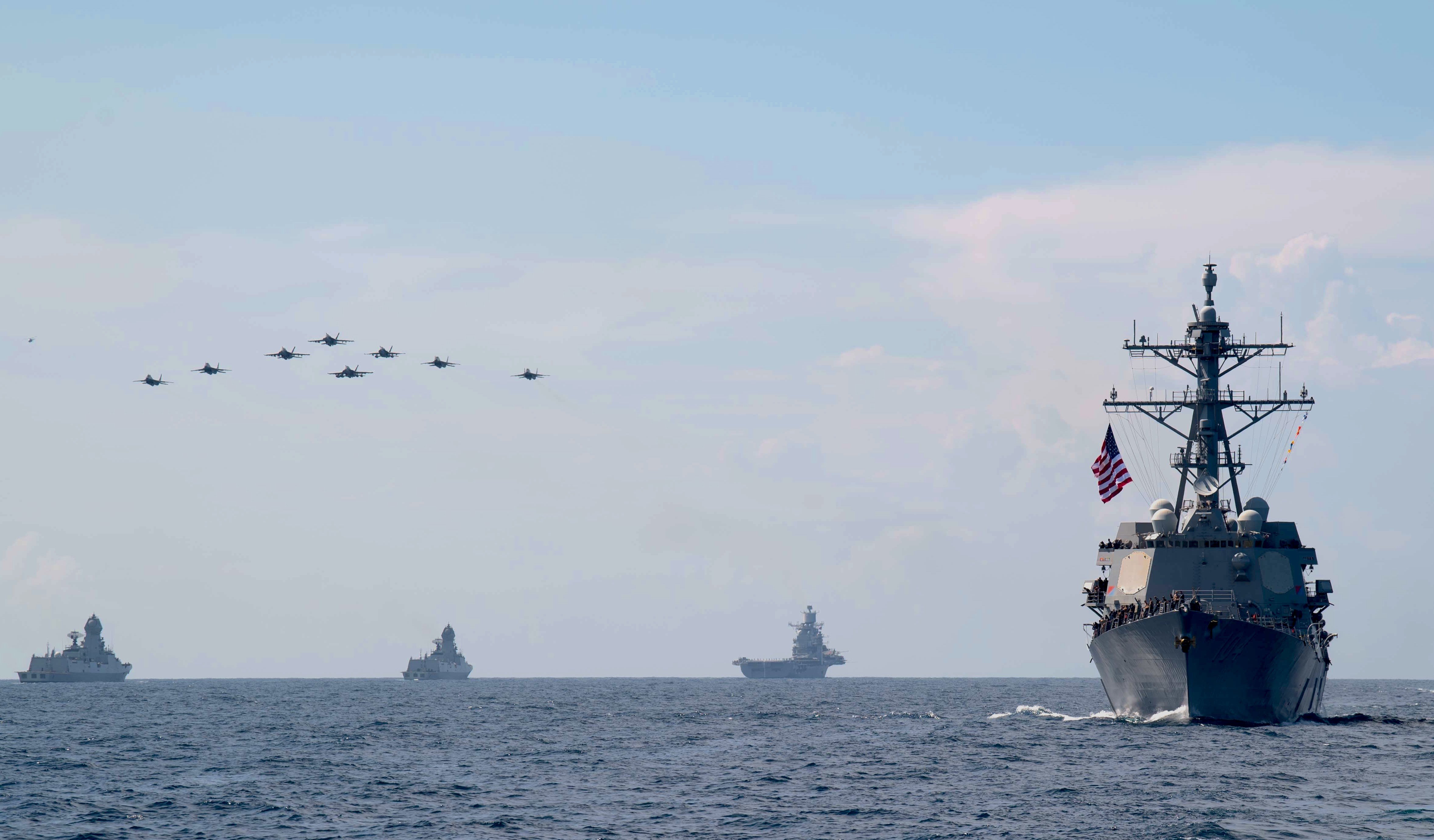
The question of whether the “accelerated rise” in military cooperation with India – from exercises like Malabar to sharing sensitive satellite targeting intelligence – will continue under the Biden administration remains open, two experts in Indian strategy said Wednesday.
Retired Vice Adm. Shekhar Sinha, who served in senior naval positions as the relationship grew from the first Malabar exercise in 1993, asked rhetorically if the cooperation will “slow down because [the Biden administration] wants to slow down the push back on China.” He praised the Trump administration for these moves to increase security cooperation but noted American security policy “changes every four years” with presidential elections.
During a late October ceremony in New Delhi when the two nations signed the satellite intelligence-sharing agreement, Secretary of State Mike Pompeo said “big things are happening as our democracies align to better protect the citizens of our two countries and indeed, of the free world.” In addition to the four military trade agreements negotiated over the last 18-plus years, there have been 14 American-Indian military exercises in the last five years.
Speaking at Wednesday’s Hudson Institute online forum, Abhijnan Rej, director of research at Diplomat Risk Intelligence, said: “I worry about the priorities of the Biden administration [beyond China].” He cited a renewed emphasis on human rights as an example of policy that could affect relations. Without specifically mentioning New Delhi’s new citizenship law and its impact on Muslims, he wondered if India “would be considered a like-minded administration” after Biden’s inauguration.
While the U.S. and India are in general agreement over the threat China poses in Asia and in the South China Sea, they are not necessarily seeing eye-to-eye on Russia. “What’s the threat Russia [poses] in the Indo-Pacific?” Rej asked. “India welcomed Russia to the Indo-Pacific” decades ago when it was considered a “non-aligned” nation.
New Delhi has also long been a customer of Moscow’s overseas military sales, although this is shifting, Sinha said.
Regarding military equipment now, although Washington and New Delhi are emphasizing the need for “interoperability,” India has many American and Russian platforms, Sinha said. The fact is military “doctrine is not exactly aligned” when it comes to Great Power threat, he said.
Sinha also downplayed Russia’s influence “in the polity and the military” as being “very marginal.” He said India is going its own way in shipbuilding and manufacturing military manned and unmanned aircraft through American trade agreements. As to why it took almost two decades to reach these military sales and trade pacts, the former head of its western naval command said “it was more of a political or bureaucratic hurdle” for India’s political leadership.
He acknowledged there was a fear inside the military that precious intelligence was going to Pakistan, India’s historic enemy on the subcontinent, through increased cooperation with American forces. Especially after the al Qaeda attacks of 2001, he noted Pakistan had officers serving in U.S. Central Command headquarters who, by their presence within the combatant command, had access to Indian operations, tactics and capabilities that they would not have had otherwise.
Sinha said in an answer to a question that India does not have a written grand strategy, similar to the United States, but its actions show intent. “Actions speak louder” than documents, he said. Rej said that historically, India “very reluctantly speaks out against anyone.” The problem is that reluctance “sends up a very mixed signal” to potential partners and adversaries.
As for the “Quad” – the U.S., India, Japan and Australia – Sinha said it is “still seen as a non-military organization.” Rej added that Japan’s constitution puts sharp limits on what Tokyo can do outside of its own defense and Canberra’s parliament has set limits on its involvement beyond existing treaty commitments.
As of this moment, Sinha added there is no formal organization to back up the informal arrangement of the Quad. He said it is more of a supply chain backstop than an economic, diplomatic or security organization. He suggested the expanded Malabar exercise of 2020 with Australia participating for the first time as a mechanism to use in formalizing the four nations’ relationship.





